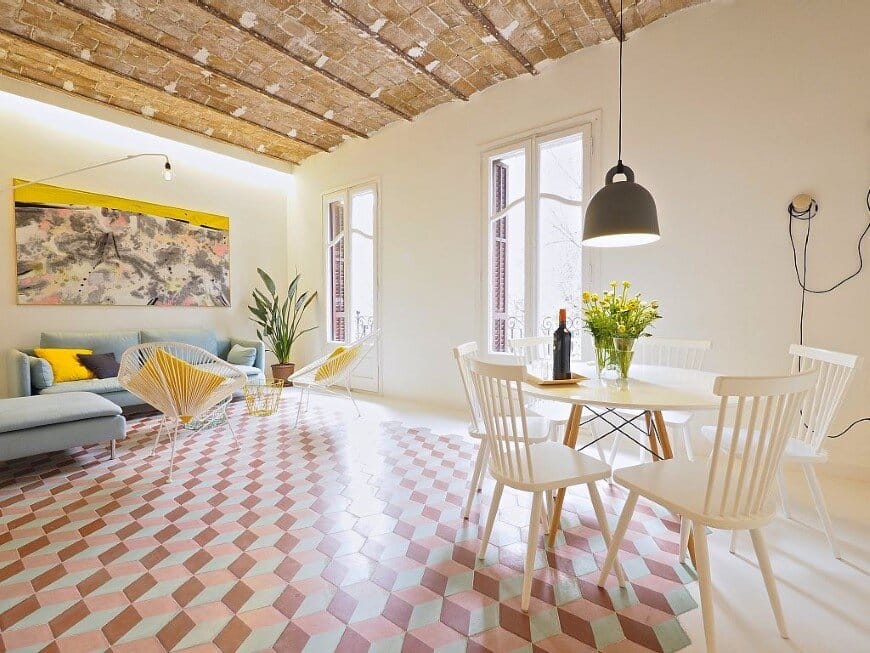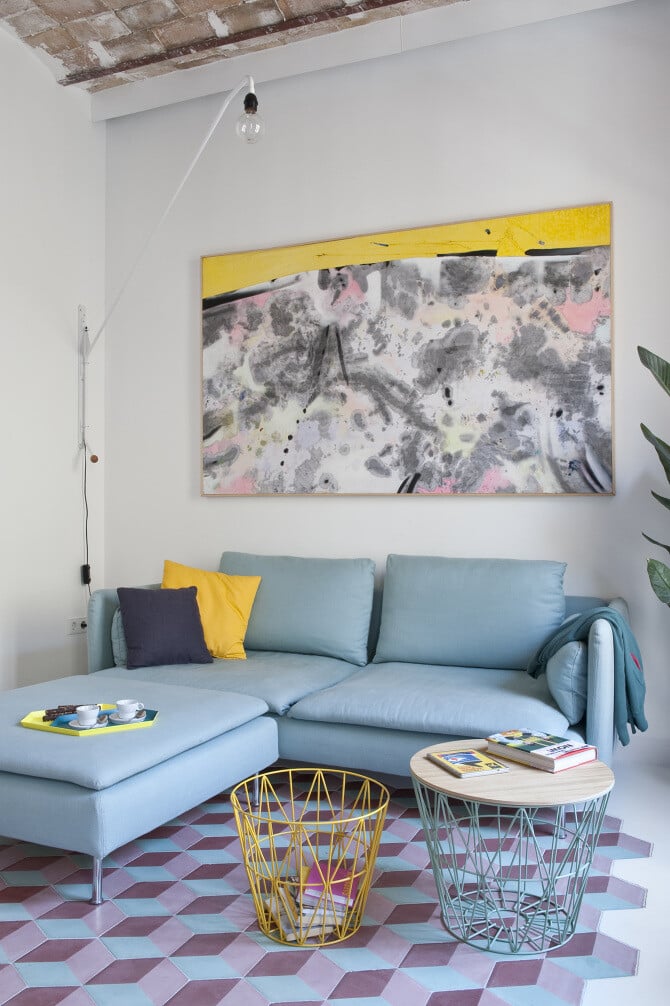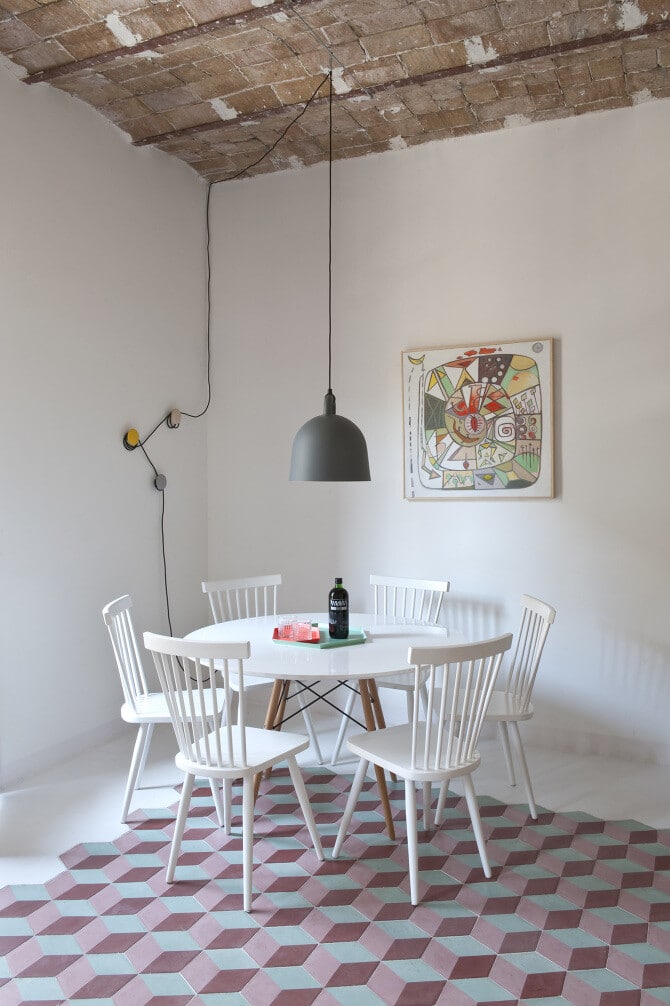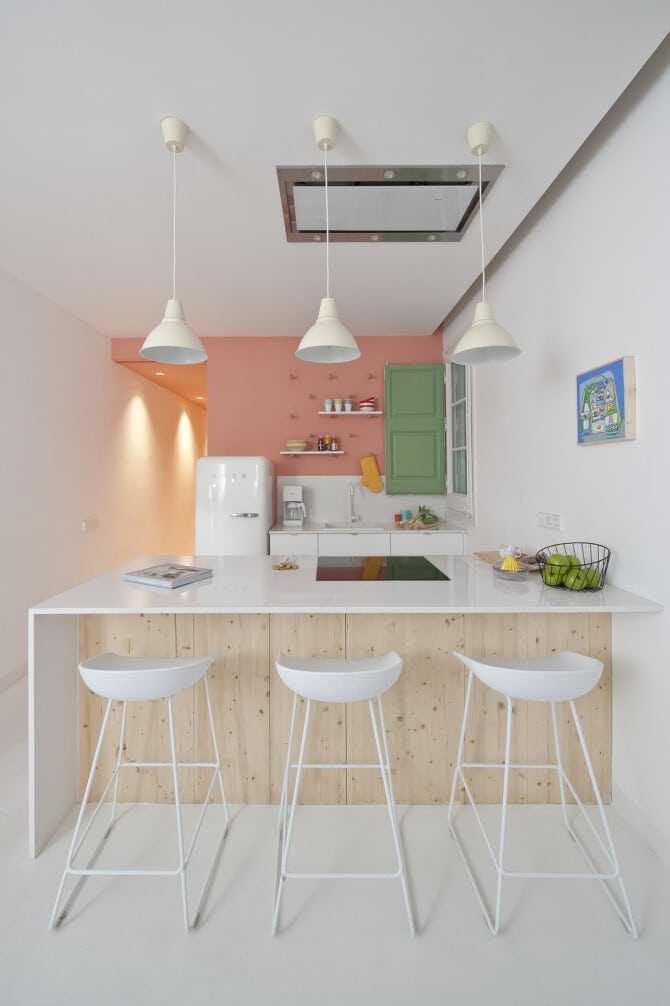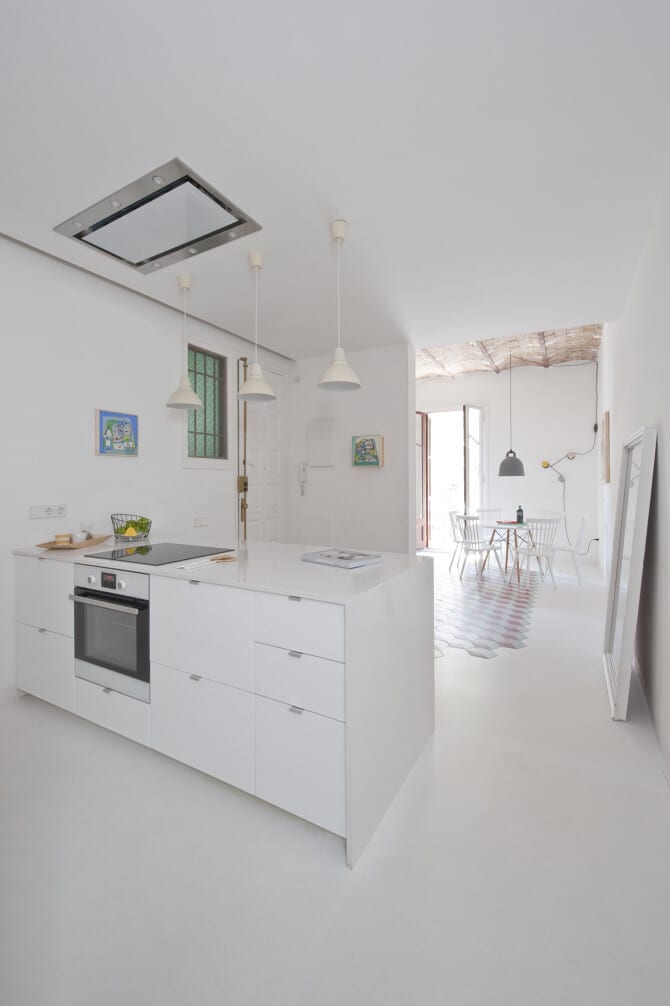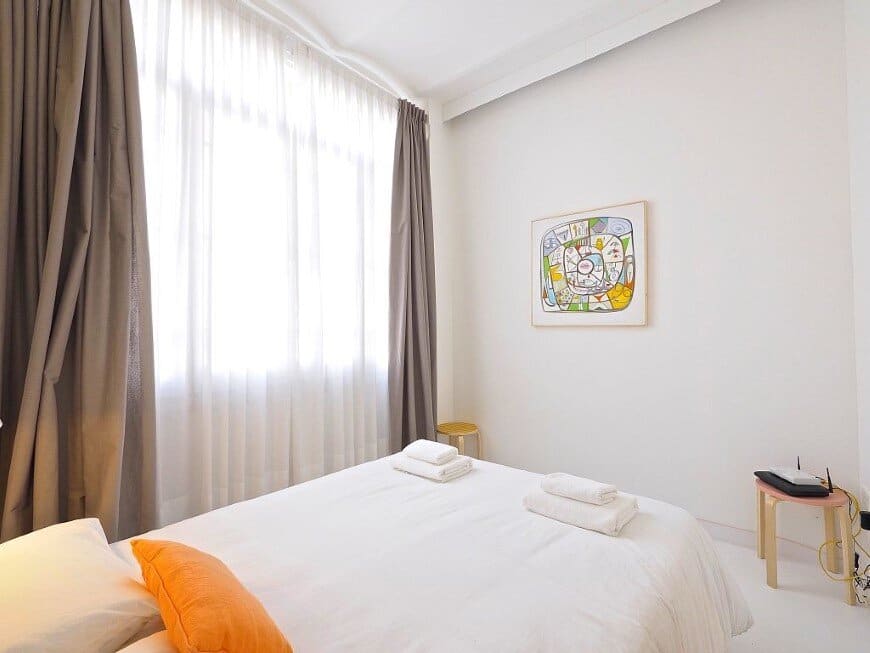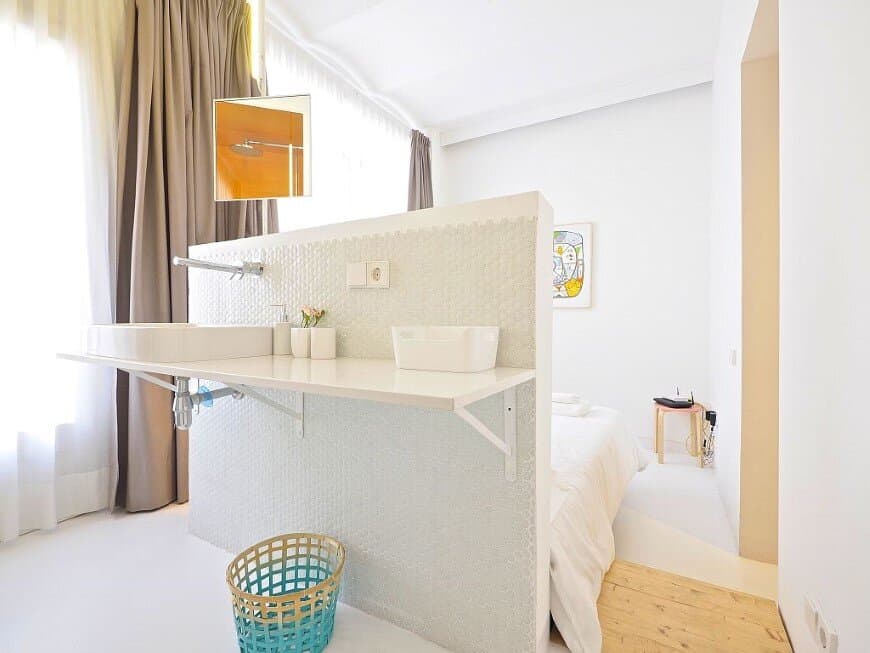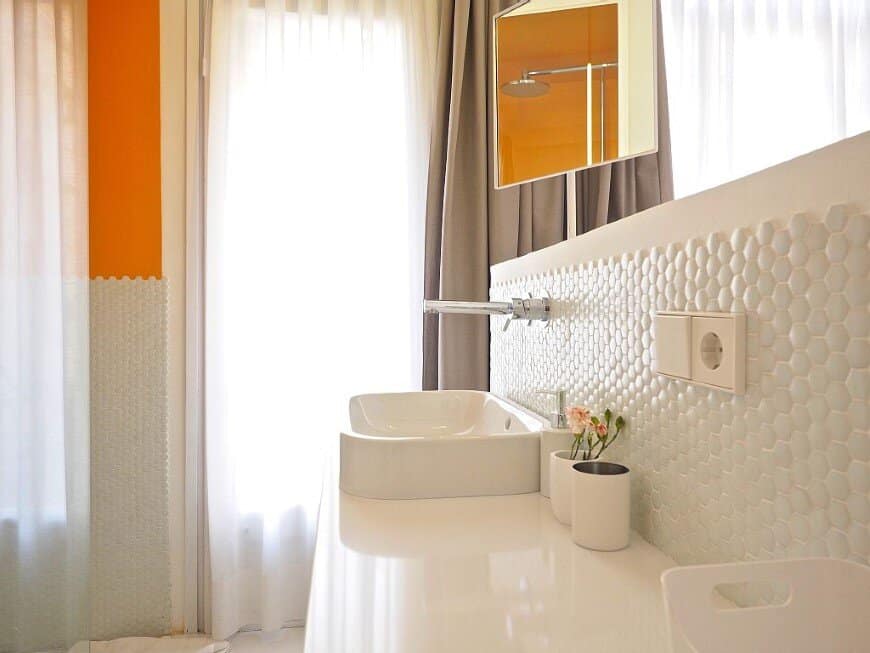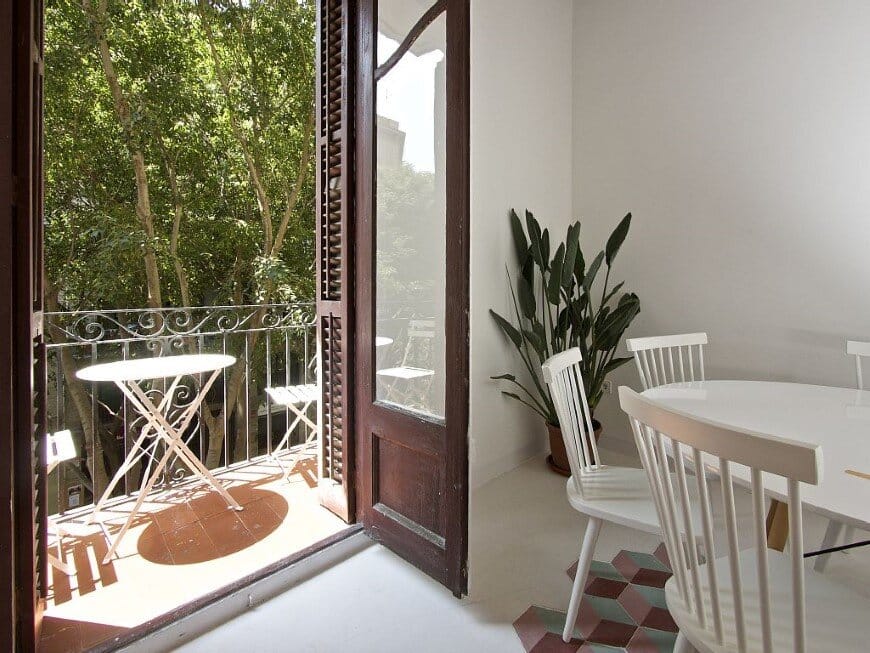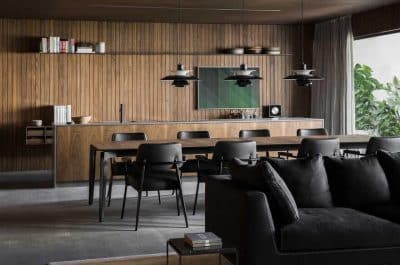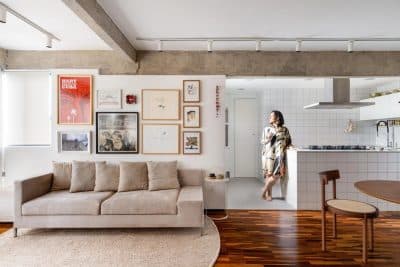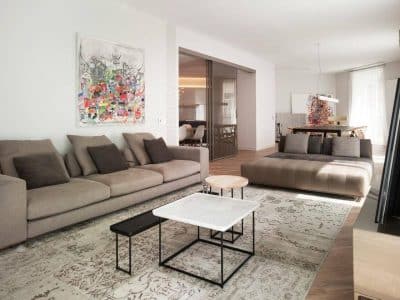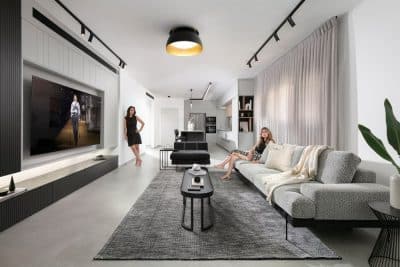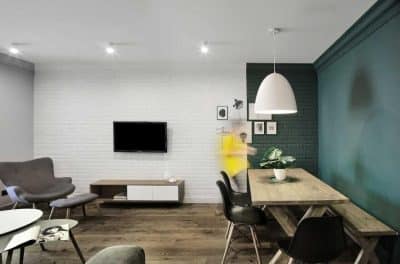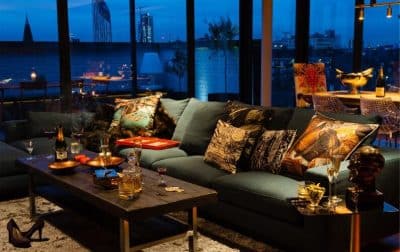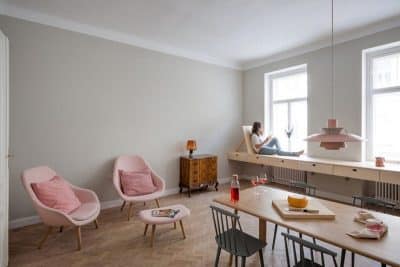Project: Holiday Apartment in Barcelona
Architects: Margherita Serboli , Colombo and Serboli Architecture (CaSA)
Surface: 97m²
Status: Completed
Location: Barcelona, Spain
Built by Alsamasa
Photos by Roberto Ruiz
Courtesy of Colombo and Serboli Architecture
Tyche Apartment occupies an art nouveau building of the Eixample district of Barcelona, Spain, and was fully renovated by CaSA and Architect Margherita Serboli to become the holiday apartment for an Italian family.
The client’s brief was used a guideline: their wish was to have three double bedrooms and a home that would highlight and underline the early 1900 detailing of the building, through a design that using a contemporary language. The original layout wasted considerable space and was poorly orientated. Its longitudinal distribution, forced by the transversal bearing walls, resulted in many densely separated small spaces, spared along a long corridor that isolated the two ends of the apartment.
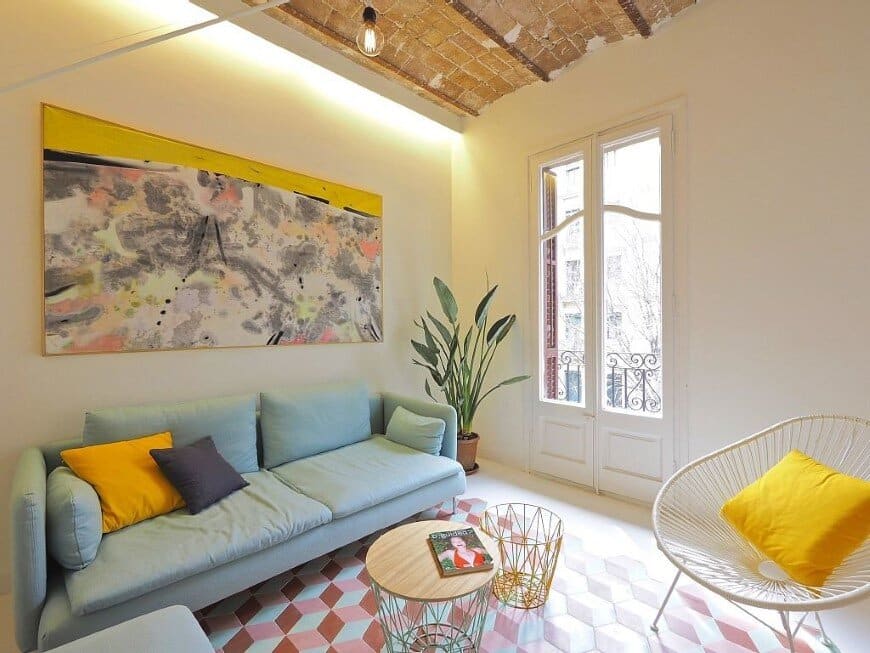
A widest day area has been created by opening part of the old corridor to the kitchen-living area, and by doing so allowing the light to flood in, through the dense pattern of treetops. The block that embodies the two minor bedrooms grows around the second axe. This light pink coloured volume separates the day area from the area ad the inner end of the property, which became the suite. This master bedroom, previously occupied by kitchen and a studio, forms an open space of almost 20sqm, which includes the bathroom that is separated by a change of floor level. This solution allows making the most of the light coming from the great original window frame that occupies almost all the wall facing the inner courtyard.
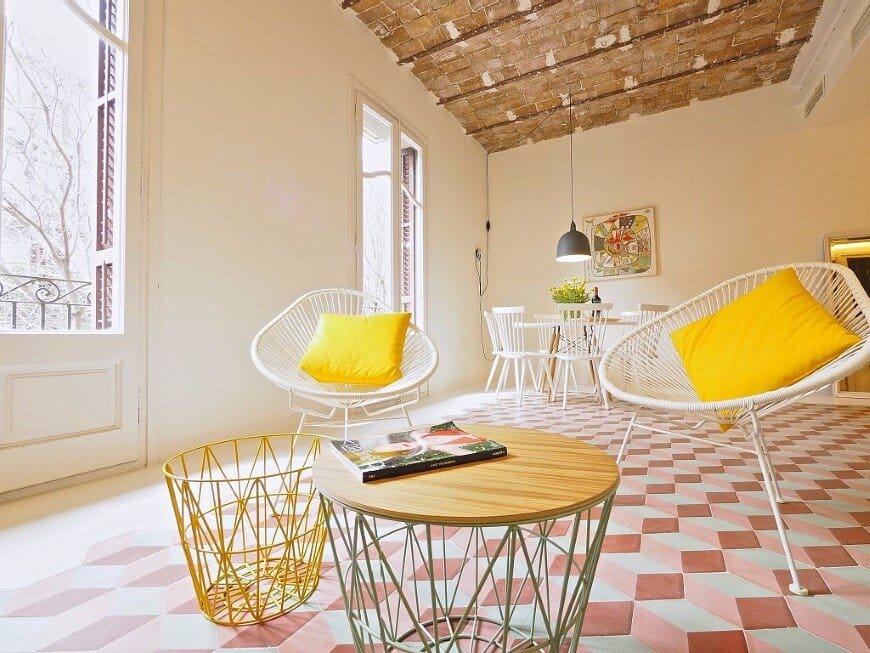
The hydraulic tile represents a typical element of this kind of early twentieth century dwelling; It was the customer’s wish to reintroduce them in this holiday apartment project. The architects have expressly designed a hydraulic tile, using a current format as the hexagonal and contemporary colours. The neutral coloured tiles traditionally used as a frame to hydraulic tiles have been replaced here by an off-white solid continuous floor, forming the edge to an irregular carpet of colourful geometrical shapes that lead from the entrance to the hall, unifying environments.
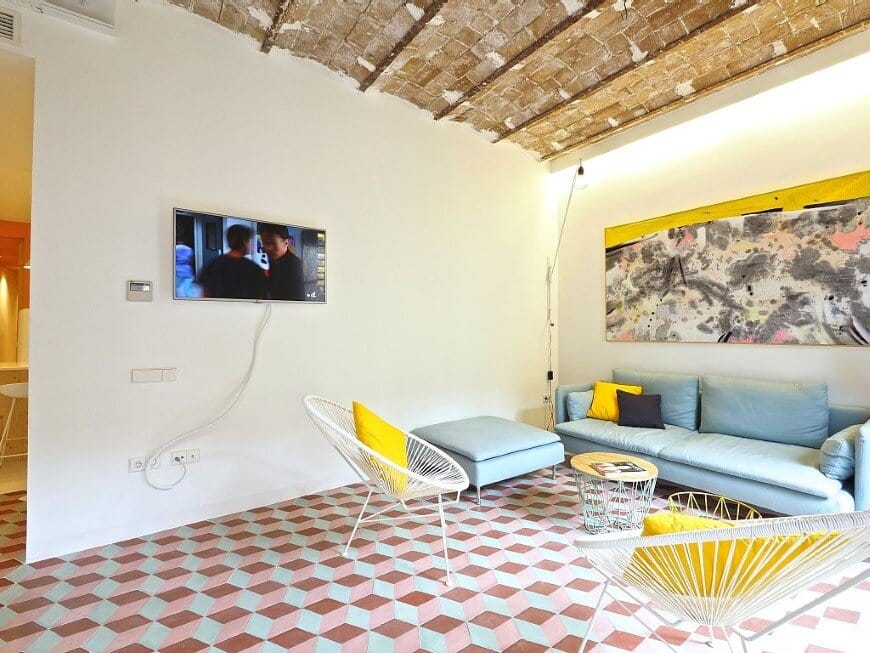
The palette of materials and colours creates a dialogue that’s always different, punctuated by the two volumes that define the project, one in pink paint, the other clad in wood. A Mediterranean-inspired atmosphere dominates the entire floor with a combination of colours partly suggested by original features – such as the amaranth wooden window frames of the facade – and dominated by white and pastel tones.
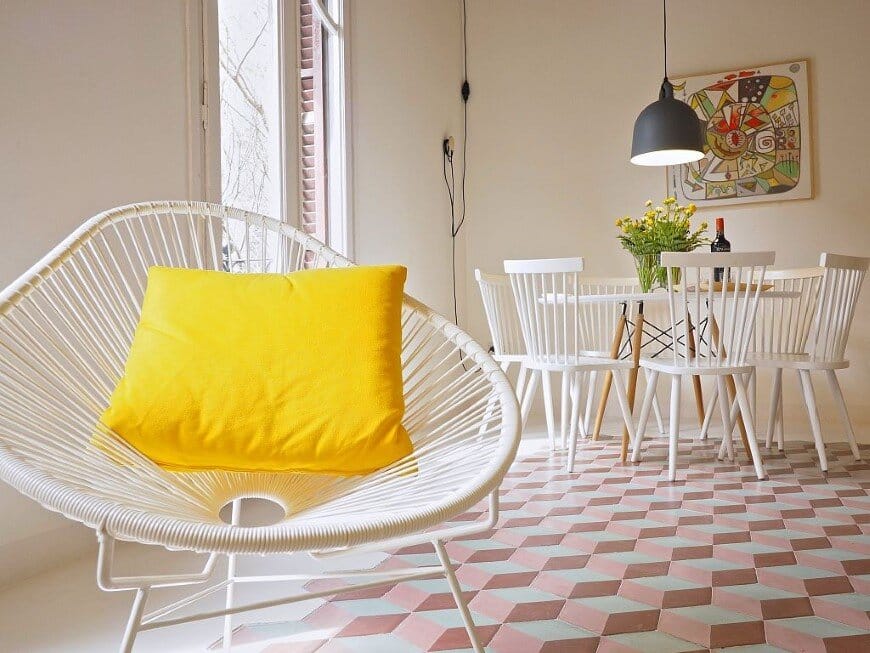
The secondary bedrooms block is shaped as a pink box whose volume is inserted with its tonal load between the white spaces of kitchen/ hallway and a second body, of natural wood. The colour white prevails inside the pink block and it’s pink becomes the colour of the original window frames. The exterior green colour of the same windows enters the room through the window shades becoming a further element of colour.
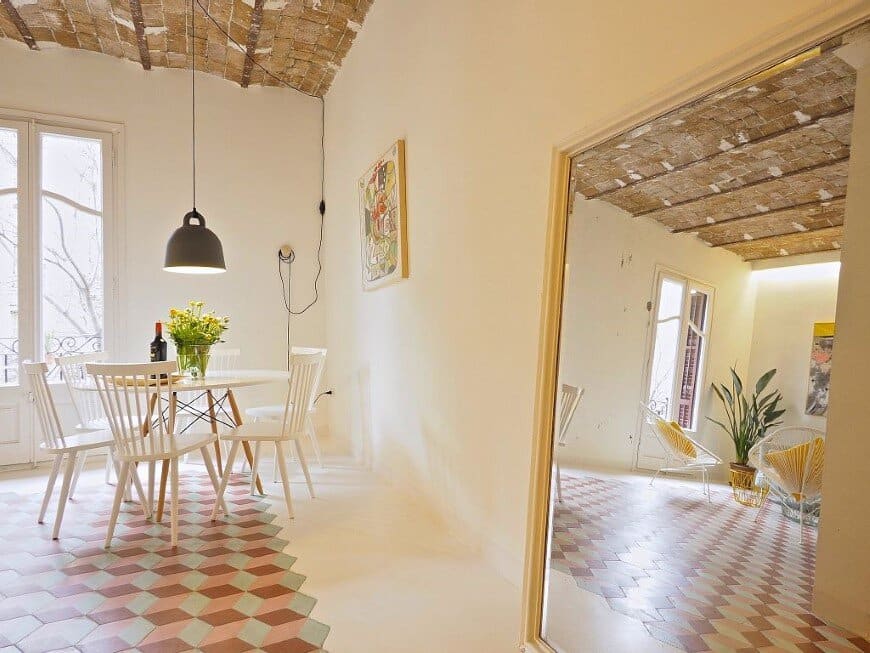
The wood clad volume is lined internally with a bright yellow and in parts shelled with mosaic-like white hexagonal tiles. White tubular elements which allow pivoting mirrors being oriented. Natural wood also appears from the first elements of the kitchen – the structure of sticks on the wall that forms a small shelves, the front of the kitchen island and the large sliding door that separates the day area from the night one – and returns as storage boxes in the secondary bedrooms, supported by tubular elements in the white racks designed by architects. In the kitchen an industrial extractor – flush with the ceiling – avoids the volume of the hood above the stove.
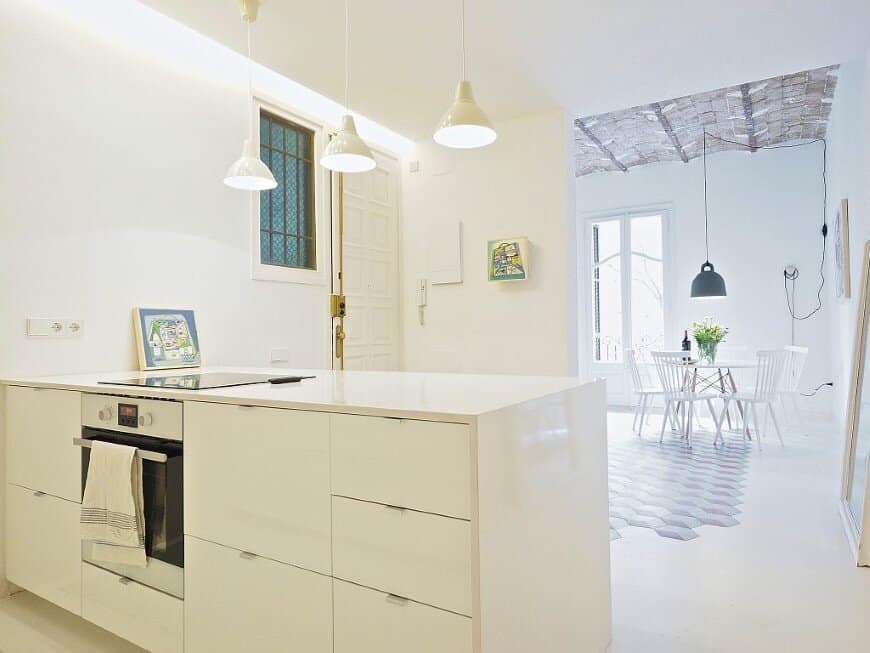
An antique bevelled mirror found in the holiday apartment and an old radio record-player furniture add the human “lived-in” touch to the very contemporary furniture, dissolving it in a warmer atmosphere. Large paintings by Piero Serboli dominate the living space and the suite, offering a Mediterranean and colourful imagery.

